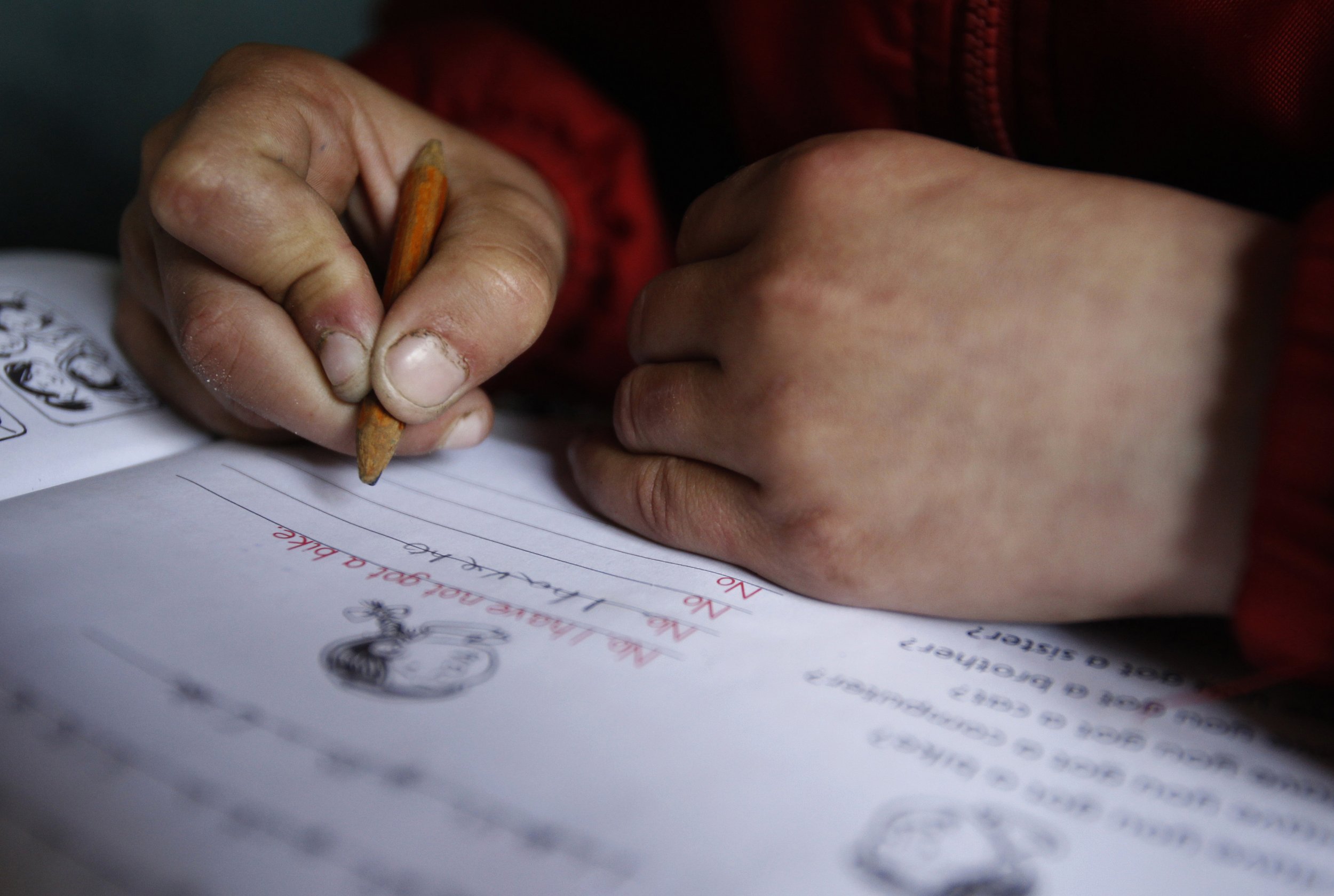
It's no secret that when it comes to education, America gets a D-minus. In the most recent global tests – scored on a 1,000-point scale – the U.S. scored a 481 in math, 497 in science, and 498 in reading comprehension. In comparison, international averages were 494, 501, and 496, and the U.S. lags well behind the world's leaders, a list which includes some of the usual suspects like China, Japan and the Netherlands, but also has Latvia, Slovenia and Vietnam.
Why is the world's largest economy so bad at teaching its children? One growing school of thought is that the U.S. education system, in its laudable quest to make sure the worst students reach minimal standards, is cheating its best pupils.
"Gifted children are a precious human-capital resource," said David Lubinski, a professor of psychology and human development at Vanderbilt University, in a recent news release. They are the "future creators of modern culture and leaders in business, health care, law, the professoriate, and STEM [science, technology, engineering and mathematics]." With fellow researcher Camilla Benbow, Lubinski's team at Vanderbilt is tracking some of our country's best and brightest. His project, known as the Study of Mathematically Precocious Youth (SMPY), although something of a misnomer, since it tests verbal abilities as well, began in 1971 at Julian Stanley's lab at Johns Hopkins. From there it moved to Iowa State in 1986, and then again to Vanderbilt in 1998, where it has been ever since.
His formerly precocious youths are now age 38, full-fledged adults who, according to Lubinski's latest findings, have had success in a wide range of careers, from law and medicine to arts and humanities, and to engineering, business and pedagogy. Of the 320 participants, 203 earned at least a master's degree. And 142 of them (44 percent) earned doctoral degrees, a ratio far higher than that of the average population, which adds the coveted Ph. D. initials at a rate of only 2 percent. Clearly, these kids are going places.
That's great news, but these kids appear to have excelled despite their education. For years, teachers have operated under the assumption that gifted children – the tiny group smarter than 99.99 percent of their peers – need and deserve less attention than the kids in remedial classes. When the research team looked back at Stanley's original assessments of classroom dynamics, they found that teachers more or less ignored gifted children, instead teaching to a one-size-fits-all curriculum that catered to the lowest common denominator.
It still happens today. A 2008 report found that the controversial No Child Left Behind Act of 2001 indeed helped low-achieving students rise to meet a more rigorous course load, but shifted teachers' sights away from the gifted kids, who seemed capable of helping themselves stay on track.
Lubinski argues that gifted children are hurt by the race to the middle. "There has to be flexibility," he told Newsweek. "That is the message I'd give to teachers." But how can a teacher realistically instruct a classroom in which some students are light years ahead?
One solution is to group children by their rate of learning, rather than chronological age. For example, a gifted 9-year-old may share a geometry class with high school freshmen. A 15-year-old may hit the advanced placement ceiling at his high school, and head over to the local community college to take classes. The key is to personalize an individual's education, even in preschool: If someone is a whiz at differential calculus but can't discern between her pronouns and her prepositions, maybe moving her out of the 11th grade entirely isn't the best move. Don't raise the entire ceiling, in other words – just remove a few tiles.
Megan Tomlinson, a 10th-grade English and Journalism teacher at High School for Public Service in Brooklyn, N.Y., says she has seen too many talented students have their potential squandered because their school doesn't foster growth. "It's frustrating, as a teacher, to watch students who could and should be challenging themselves, earning great grades, and potentially being rewarded with scholarships and entry into great colleges simply settle for doing 'well enough' to earn good grades because they're bored, unmotivated or have learned how to 'do school' without putting forth much effort," she said.
Tomlinson tries to accommodate both ends of the spectrum by offering variations of each assignment, tailored to a student's ability. "Other times, I pull gifted students aside privately and explain that because of their potential and ability, I expect them to complete the more advanced assignment," she said. "If they are reluctant, I may reach out to parents for support."
Tomlinson's frustrations, much like those experienced by many of the nation's public school teachers, are compounded by the larger forces acting on the environment in which she works. Figures released early last year showed 77 percent of entrants into City University of New York schools needed remediation math in order to enroll. But Tomlinson has been able to work within the constraints by balancing her time to ensure uplift on both ends. "I'm extremely grateful to be working at a school that consistently reminds me to continue to push my gifted and talented students," she said. "They do not necessarily have the motivation, skills or access to outlets for growth to succeed on their own. They need me, too."
After all, a gifted 12-year-old is still a 12-year-old.
But for every Tomlinson, there will be a teacher (or five) who can't manage the delicate balance, or is uncomfortable teaching outside the norm. For the U.S. to reach the upper echelons of educational attainment in an increasingly competitive global environment, it probably needs change that comes from both the bottom, through teachers like Tomlinson, and the top, from serious education reform focused on cultivating intellectual achievement. Before innovative ideas like Lubinski's can take hold, there needs to be a consensus among all the stakeholders that winning is important, and it isn't enough to simply enter the race.
This story has been corrected to reflect that figures released early last year showed 77 percent of entrants into City University of New York schools needed remediation math in order to enroll.
Uncommon Knowledge
Newsweek is committed to challenging conventional wisdom and finding connections in the search for common ground.
Newsweek is committed to challenging conventional wisdom and finding connections in the search for common ground.
About the writer
To read how Newsweek uses AI as a newsroom tool, Click here.








